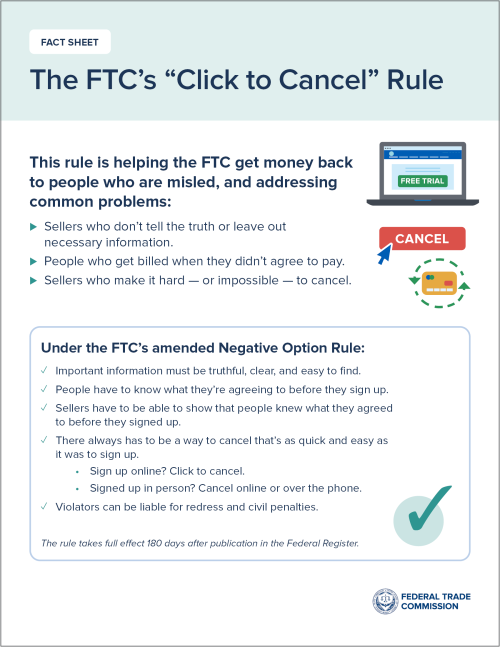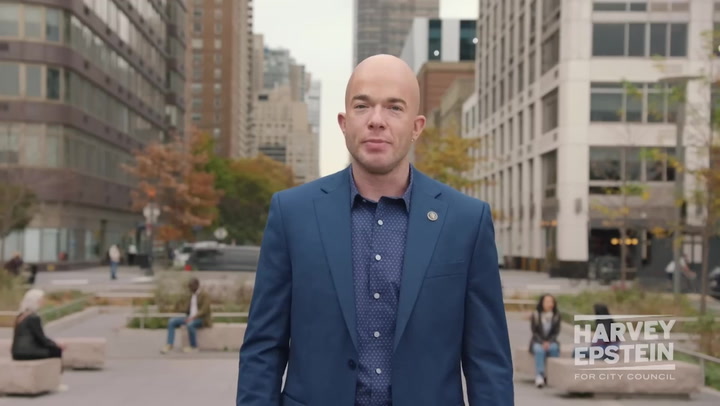
The Federal Trade Commission (FTC) has introduced a significant update in consumer protection regulations with the new 'Click to Cancel' rule. This regulation aims to minimize the confusion and frustration faced by consumers when trying to cancel unwanted subscription services. For many, the hassle of cancellation often overshadows the initial excitement of signing up for a service, leading to unnecessary costs. The FTC's new rule is a welcome change that emphasizes consumer rights and transparency in the subscription process.
With the rise of subscription-based models across various industries—from streaming services like Netflix and Hulu to meal kits and software subscriptions—ensuring an easy cancellation process is essential. The intricacies of subscription marketing have often meant that consumers encounter complex terminologies and convoluted processes when attempting to discontinue their services. The 'Click to Cancel' rule directly addresses these issues by imposing regulations on companies that restrict easy cancellation.
Understanding the 'Click to Cancel' Rule and its Implications
The 'Click to Cancel' rule mandates that companies must provide cancellation options that are as straightforward as the sign-up process. This means if a consumer signs up for a service with a single click online, they should also be able to cancel it with a similar ease, ideally through a one-click process. This fundamental shift is designed to dismantle the many barriers that have previously made subscription cancellations a daunting task.
Companies engaging in subscription-based services must now ensure that their cancellation process is transparent. This involves clearly stating the terms of service and not misleading customers about cancellation policies at the point of sign-up. In essence, consumers must be fully informed about what they are committing to, without hidden traps that complicate their ability to back out when they choose.
The Rise of Negative Option Marketing
One of the primary concerns that prompted the formulation of this rule is the prevalence of 'negative option marketing.' This marketing strategy allows businesses to charge customers for services if they do not explicitly decline an offer. It has often resulted in scenarios where consumers are unknowingly billed month after month for services they may no longer use or want.
For instance, many consumers find themselves continually subscribed to services like Amazon Prime or Spotify, as they fail to cancel amidst busy schedules or the confusion of cancellation policies. The FTC's new rule directly challenges this practice, ensuring companies cannot misinterpret a consumer's silence as consent to ongoing payments.
FTC Chair Lina M. Khan stated, “Too often, businesses make people jump through endless hoops just to cancel a subscription. The FTC’s rule will end these tricks and traps, saving Americans time and money. Nobody should be stuck paying for a service they no longer want.” This statement reflects a growing commitment within the federal government to protect consumers and ensure fairness in business practices.
Impact on Subscription Services
As the 'Click to Cancel' rule comes into effect, it promises to reshape how subscription services operate. Companies must now prepare to adjust their customer service protocols and potentially re-engineer their marketing strategies to comply with the new regulations. The implications mean that businesses will need to invest in more transparent practices, ensuring their consumers have a complete understanding of their financial obligations.
For subscribers, this means a welcomed shift towards more straightforward access to their rights. Consumers should no longer feel trapped in an endless loop of subscription fees and intricate cancellation processes. Instead, they’ll have the clarity and direct access they deserve.
What Consumers Should Do Next
With the impending implementation of the 'Click to Cancel' rule, consumers are encouraged to familiarize themselves with the specifics of their subscription agreements. Understanding your rights is important as the changes roll out. Being aware of cancellation rights and terms will empower consumers to make informed decisions moving forward.
When subscribing to a new service, always take a moment to review the cancellation policy. Look for a company’s transparency, especially regarding their processes surrounding withdrawal from the service. If a cancellation appears overly complicated when you are looking to subscribe, consider this a red flag.
Looking Ahead: The Future of Subscription Services
As this new rule takes effect, the subscription service landscape is likely to evolve in response to increased consumer awareness and regulatory environments. Companies may find that they need to prioritize user-friendly systems that facilitate both sign-ups and cancellations effectively. The 'Click to Cancel' rule signifies a broader movement toward heightened consumer empowerment, setting a precedent for future regulations that ensure customer rights are upheld.
In conclusion, the FTC's new 'Click to Cancel' rule stands as a powerful tool designed to promote clarity, efficiency, and fairness in the ever-growing subscription economy. It marks a significant step toward protecting consumers from misleading practices, providing a much-needed pathway for canceling unwanted services without unnecessary stress or confusion. With the rule in effect, consumers can confidently navigate the virtual marketplace, armed with the knowledge that their rights are being safeguarded.





.webp)

